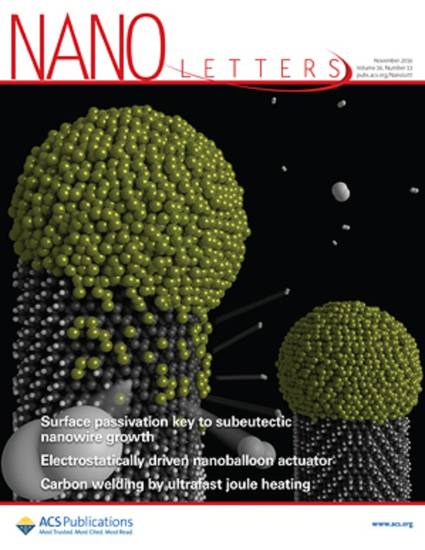
Article
Strong Coupling of Localized Surface Plasmons to Excitons in Light-Harvesting Complexes
Nano Letters
(2016)
Abstract
Gold nanostructure arrays exhibit surface plasmon resonances that split after attaching light harvesting complexes 1 and 2 (LH1 and LH2) from purple bacteria. The splitting is attributed to strong coupling between the localized surface plasmon resonances and excitons in the light-harvesting complexes. Wild-type and mutant LH1 and LH2 from Rhodobacter sphaeroides containing different carotenoids yield different splitting energies, demonstrating that the coupling mechanism is sensitive to the electronic states in the light harvesting complexes. Plasmon−exciton coupling models reveal different coupling strengths depending on the molecular organization and the protein coverage, consistent with strong coupling. Strong coupling was also observed for self-assembling polypeptide maquettes that contain only chlorins. However, it is not observed for monolayers of bacteriochlorophyll, indicating that strong plasmon−exciton coupling is sensitive to the specific presentation of the pigment molecules
Keywords
- strong coupling,
- plasmonic nanoparticles,
- light harvesting complexes,
- purple bacteria,
- photosynthesis
Disciplines
Publication Date
November 9, 2016
DOI
10.1021/acs.nanolett.6b02661
Publisher Statement
For a complete list of authors, please see article.
Citation Information
Olga A. Mass. "Strong Coupling of Localized Surface Plasmons to Excitons in Light-Harvesting Complexes" Nano Letters Vol. 16 Iss. 11 (2016) p. 6850 - 6856 Available at: http://works.bepress.com/olga-mass/4/
